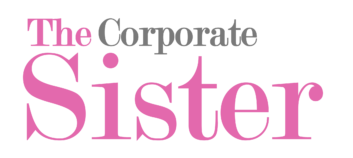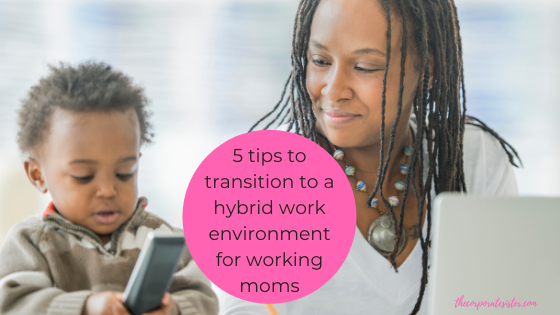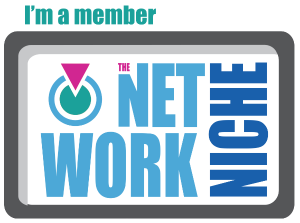As we hopefully near the end of the COVID-19 pandemic, the drastic changes it’s brought to the way we work, especially as working women and moms, are undeniable. From shifting the work dynamic for women and moms, resulting in countless job losses for women and the bulk of the pandemic “burden” on working moms faced with a childcare crisis and the majority of household chores, to negating decades of gender equity advances, its impact has been heavy to say the least. The “new” normal it’s created is pointing next to a hybrid post-COVID future for work.
According to a Stanford Institute for Economic Policy Research (SIEPR) survey, 55% of U.S. workers lean more towards a mixture of office and home work. While businesses are adjusting to the post-COVID world in different ways, from allowing employees to work remotely indefinitely to staggering their return to work, they’re also laying the foundation for an increasingly hybrid work future. For working mothers who have been dealing with a childcare crisis and a compounding of home and work responsibilities during the pandemic, this is a new adjustment that is certainly coming at a substantial cost. This is the cost of re-negotiating already precarious boundaries between work and home, solving the issue of childcare, and dealing with the mental load associated with it all.

While hybrid work arrangements may seem like the best of both worlds, with flexibility on one hand and socialization on the other, they represent yet another transition for working moms. Shifting from working from home to alternating between the office and the home requires not just a mental adjustment, but countless logistical changes that also come in play.
In my own experience, transitioning from working exclusively from home to a more hybrid schedule brought both a sense of relief at the prospect of more social time outside of the house; and also a sense of anxiety as to how to manage childcare, house duties and finding new ways to integrate this next normal. While it’s worked well so far, it hasn’t been without challenges, along with precious lessons in adaptability, flexibility and sheer human innovation.
If you’re ready to transition to a hybrid work environment as a working mom, here are 5 tips that can help:
- Make the mental shift first
Most often, it’s not so much the physical, but the mental load that drives working mothers to exhaustion. As such, it’s crucial in any season of transition (which is pretty much the majority of time when you’re a working mom), to make the necessary mental shifts first.
Asking questions such as: “What is this new normal going to look like for me?”, “How do I feel about this change?”, “Why do I feel this way?”, or “What can I constructively do about this”, may seem unimportant at first. However, they are the catalysts of much needed exercises in self-regulation and self-assessment that are so important for working moms constantly having to think on their feet and respond to new situations on the go.
For me, it’s been a matter of rally taking the time to check in with myself to avoid feeling overwhelmed and making rash decisions. A simple time-out at the beginning or in the middle of the day can help, as can daily or frequent journaling and sharing with trusted friends.
- Clarify and set clear expectations
Transitioning to a hybrid work environment also presents a set of new expectations. After a particularly traumatic pandemic year, these expectations may be quite different from pre-pandemic expectations. Hence, the importance of clarifying and setting clear expectations.
What hours and days will I be expected to be in the office? When at home, what is the expectation in terms of work hours? What does a more flexible schedule look like? What does a typical day look like? What norms of safety will be in place? There are examples of questions that can be part of the conversation to clarify expectations.
- Define boundaries
Along with clarifying and setting expectations, defining boundaries is also paramount as the transition to a hybrid work environment involves a potential blurring of lines between work and home. As many, if not most working moms, found themselves lost in the shuffle of work and home during the pandemic, many more can also be disadvantaged by the lack of a clear line of professional and personal demarcation in a hybrid setting.
Am I expected to take calls at home after a certain time? Do I have to answer emails after-hours? On my days working from home, will I be expected to show up to the office in case of an urgent meeting or matter? These questions can serve as good examples of defining clearer boundaries in hybrid environments.
- Discuss the ramifications for your career and your future career plans
Just as the concept of flexibility, while seemingly appearing to benefit working mothers, has actually added a layer of stigma to women’s career, a transition to a hybrid work setting can also have ramifications for women’s careers. As working mothers on flexible schedules have been in many instances stigmatized as less productive, working moms in hybrid work settings may also suffer from the same stigma.
One way to circumvent this stigma is to have a clear discussion and understanding of any possible ramifications for your career. Having an honest conversation with your manager can help alleviate these concerns, while opening the door to discuss the future of your career.
Would this hybrid schedule hurt my career? What are some new opportunities and challenges I can take advantage of? What would I have to do to reach the next level in my career? These questions can be asked in the course of a performance review as well as as part of a quick check-in with your management.
- Adjust as you go
Last but not least, any transition requires a certain amount of experience and adjustment on-the-go. As you transition to a hybrid work setting, many of the moving pieces in your environment will also have to be re-calibrated. From adjusting your childcare schedule, to making new logistical arrangements and re-organizing your work priorities, some of the changes involved will not be perfectly aligned from the start.
Re-adjusting schedules, setting different expectations, and even considering a change in careers may come into play during this transition. Being flexible and adjusting as you go will go a long way towards reaching a better equilibrium.
How are you planning on transitioning to a hybrid work environment as a working mom?
The Corporate Sis.







